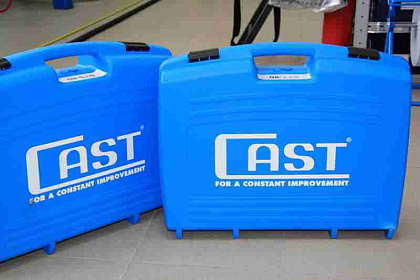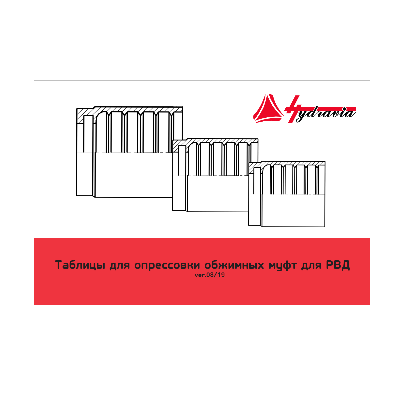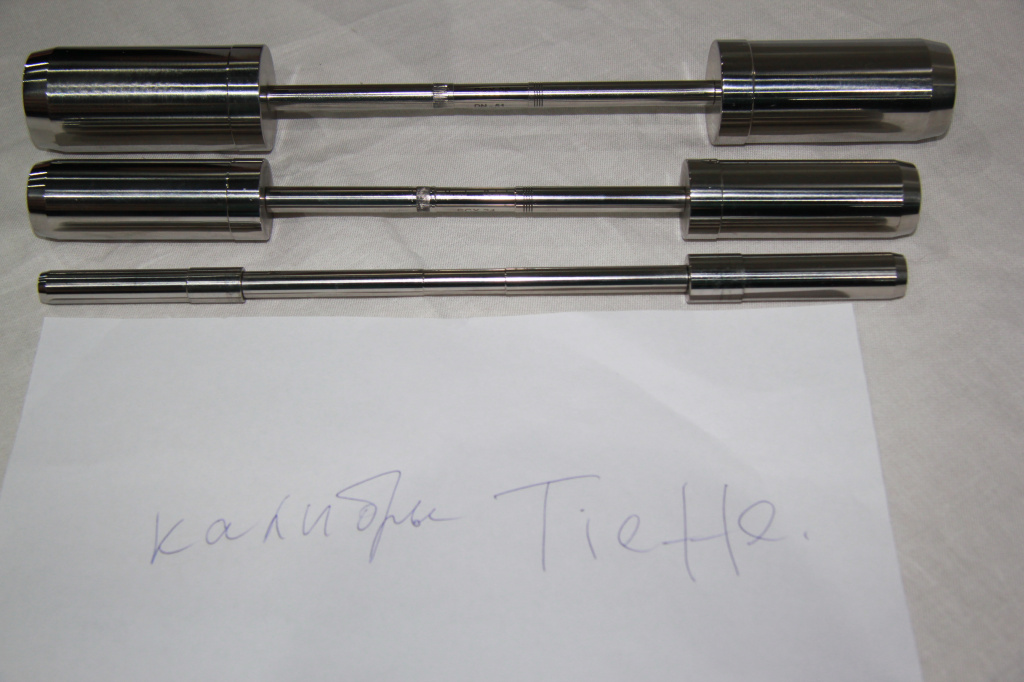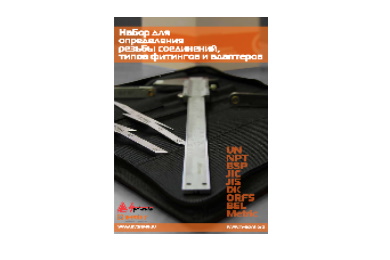—
—
Miscellaneous tools for houses
Equipment for assembling high pressure hoses and tubesHydraulic hosesHydralics fittingsIndustrial hosesFittings for industrial hosesThermoplastic hosesPTFE teflon hosesFittings for thermoplastic and PTFE hosesUltra-high pressure hosesPush Lok low pressure hosesTube fittingsSwivel jointsValvesQuick couplingsStainless steel fittingsReusable fittingsHose protection Hoses for the automotive industryAutomotive fittingsDrilling hosesHydraulic tubesHydraulic fracturing hosesPlugs for fittingsHose, tube & pipe cleaning systemSealsPipe fixing Ball valvesOnline partnershipHydraulic testing equipment Retention systems and clamps for hosesLubrication and dispensing equipmentMiscellaneous tools for houses
Filters
Article:
SCH12-16
SCH12-16
Наименование
Калибр для проверки качества опрессовки 12-16 Interlock (3/4" и 1")
Тип
CH
Размер рукава
3/4", 1"
Тип рукава
Навивочные рукава для фитингов Interlock
SCH20-24
Наименование
Калибр для проверки качества опрессовки Dash-20 Interlock Dash-20-24 Interlock (1.1/4 и 1.1/2)
Тип
CH
Размер рукава
1.1/4", 1.1/2"
Тип рукава
Навивочные рукава для фитингов Interlock
SCH20-24 _
Наименование
Калибр для проверки качества опрессовки Dash-20 Interlock Dash-20-24 Interlock (1.1/4 и 1.1/2)
Тип
CH
Размер рукава
1.1/4", 1.1/2"
Тип рукава
Навивочные рукава для фитингов Interlock
SCH32
Наименование
Калибр для проверки качества опрессовки Dash-32 Interlock (2 дюйм)
Тип
CH
Размер рукава
2"
Тип рукава
Навивочные рукава для фитингов Interlock
SCS12-16
Наименование
Калибр для проверки качества опрессовки Dash-12-16 CS (3/4 и 1)
Тип
CS
Размер рукава
3/4", 1"
Тип рукава
Навивочные рукава для фитингов CS
SCS20-24
Наименование
Калибр для проверки качества опрессовки Dash 20-24 CS (1.1/4 и 1.1/2)
Тип
CS
Размер рукава
1.1/4", 1.1/2"
Тип рукава
Навивочные рукава для фитингов CS
SCS32
Наименование
Калибр для проверки качества опрессовки Dash-32 CS (2 дюйм)
Тип
CS
Размер рукава
2"
Тип рукава
Навивочные рукава для фитингов CS
SCX03-05
Наименование
Калибр для проверки качества опрессовки 03-05 (3/16 и 5/16)
Тип
CX
Размер рукава
3/16", 5/16"
Тип рукава
Оплеточные рукава
SCX04
Наименование
Калибр для проверки качества опрессовки DASH-04 (1/4 дюйм)
Тип
CX
Размер рукава
1/4"
Тип рукава
Оплеточные и навивочные рукава
SCX06
Наименование
Калибр для проверки качества опрессовки Dash-06 (3/8 дюйм)
Тип
CX
Размер рукава
3/8"
Тип рукава
Оплеточные и навивочные рукава
SCX08
Наименование
Калибр для проверки качества опрессовки Dash-08 (1/2 дюйм)
Тип
CX
Размер рукава
1/2"
Тип рукава
Оплеточные и навивочные рукава
SCX10
Наименование
Калибр для проверки качества опрессовки 10 (5/8")
Тип
CX
Размер рукава
5/8"
Тип рукава
Оплеточные и навивочные рукава
SCX12
Наименование
Калибр для проверки качества опрессовки Dash-12 (3/4)
Тип
CX
Размер рукава
3/4"
Тип рукава
Оплеточные и навивочные рукава
SCX16
Наименование
Калибр для проверки качества опрессовки Dash-16 (1 дюйм)
Тип
CX
Размер рукава
1"
Тип рукава
Оплеточные и навивочные рукава
SCX20
Наименование
Калибр для проверки качества опрессовки Dash-20 (1.1/4 дюйм)
Тип
CX
Размер рукава
1.1/4"
Тип рукава
Оплеточные и навивочные рукава
SCX24
Наименование
Калибр для проверки качества опрессовки Dash-24 (1.1/2 дюйм)
Тип
CX
Размер рукава
1.1/2"
Тип рукава
Оплеточные и навивочные рукава
SCX32
Наименование
Калибр для проверки качества опрессовки Dash-32 (2 дюйм)
Тип
CX
Размер рукава
2"
Тип рукава
Оплеточные и навивочные рукава
SET CP1 8 PCS
Наименование
Калибр для проверки качества опрессовки от 03 до 20 (8 штук)
SET CX2
Наименование
Калибр для проверки качества опрессовки от 03 до 32 (10 штук)
Stock:
нет
Reserve:
нет
12 056 ₽ / PC.

Article:
STM-80
STM-80
Наименование
Калибр для проверки качества опрессовки (термопластиковые рукава) d3/16 - 1 дюйм (набор 8шт.)
Тип номенклатуры
Калибры Cast
Тип рукава
Термопластиковые рукава
Состав комплекта
3/16", 1/4", 5/16", 3/8", 1/2", 5/8", 3/4", 1"
STS-80
Наименование
Калибр (навивочные рукава) набор 9 шт. (d1/4, 3/8, 1/2, 5/8, 3/4, 1, 1.1/4, 1.1/2, 2)
Тип номенклатуры
Калибры Cast
Тип рукава
Навивочные рукава
Состав комплекта
1/4", 3/8", 1/2", 5/8", 3/4", 1", 1.1/4", 1.1/2", 2"
STSI
Наименование
Калибр для проверки качества опрессовки (навивочные рукава) d3/4 - 2 дюйма Interlock (набор 5 шт.)
Тип номенклатуры
Калибры Cast
Тип рукава
Навивочные рукава для фитингов Interlock
Состав комплекта
3/4", 1", 1.1/4", 1.1/2", 2"
STT-80
Наименование
Калибр (оплеточные рукава) набор 11 шт. (d3/16, 1/4, 5/16, 3/8, 1/2, 5/8, 3/4, 1, 1.1/4, 1.1/2, 2)
Тип номенклатуры
Калибры Cast
Тип рукава
Оплеточные рукава
Состав комплекта
3/16", 1/4", 5/16", 3/8", 1/2", 5/8", 3/4", 1", 1.1/4", 1.1/2", 2"
Stock:
7 PC.
Reserve:
нет
63 610.80 ₽ / PC.

Article:
HPOINT_CATALOG_CRIMP_TABLE_2019
HPOINT_CATALOG_CRIMP_TABLE_2019
Наименование
Каталог Опрессовочные таблицы H-POINT 2019
Ед. измерения
ed_izmerenija_796
HYDRAVIA_CATALOG_CRIMP_TABLE_2019
Наименование
Каталог Опрессовочные таблицы HYDRAVIA 2019 (товар)
Ед. измерения
ed_izmerenija_796
Stock:
78 PC.
Reserve:
нет
5 000 ₽ / PC.
To work with complex technical products, special materials and tools are required. In this section, we offer not only to familiarize yourself, but also to order the manuals, materials or tools you need. For example,gauges for pressure testing of CAST high-pressure hoses or gauges for РВД TIEFFE.
One of the most effective ways to control the quality of HPR pressurization is calledNIPPLE ID CONTROL.
Control of the internal diameter of the nipple serves to measure the so-called deformation of the nipple hole. Pin hole deformation is the localized reduction in pin hole diameter in the effective seal area of the fitting due to compressive forces applied to the sleeve wall during pressure testing. The representation of the hose assembly in terms of its resistance to rupture and leakage is determined by the level of compression of the hose wall and pipe achieved during pressure testing. Deformation of the nipple hole gives indirect confirmation of the degree of compression of the hose wall. Very high nipple compression indicates a pinched condition with excessive compression of the pipe and hose walls, which can lead to the risk of premature destruction of the hose and fitting. Also, excessive compression of the orifice can lead to additional pressure drop in these constriction zones along the fluid flow path, thus reducing the efficiency of high pressure in hydraulic circuits with high flow levels. A very weak deformation of the nipple can indicate a weak compression of the walls of the sleeve and pipe, which can increase the risk of leakage in the fittings and tearing off the fitting, especially if the sleeve "aged" during operation. Proper measurement and effective control of nipple hole failures during manufacture contributes to consistent product quality and performance and can significantly reduce the risk of premature hose failure. Control of the internal diameter of the nipple is carried out by special gauges.
It should be said here that each fitting manufacturer recommends its own calibre sizes. Gauge diameters and strain sizes should be requested from fitting suppliers.
The gauge is selected depending on the size, the type of sleeve (wire spiral or wire braid) and the type of nipple (regular type or Interlock) to be crimped. After pressure testing to the specified value, it is necessary to insert the non-pass end of the caliber into the nipple. The gauge should stop halfway to the end of the nipple. This means that the minimum deformation level has been reached. After checking with a non-pass gauge, insert the pass end of the gauge into the nipple - the gauge must pass through the nipple shank. If the test results are positive, continue to crimp the batch using the current crimping unit and control the deformation with a frequency that is statistically convenient. If the test is negative, the crimping setting should be changed and re-crimping and re-testing should be performed. The deformation of the nipple should be rechecked in the event of a change in the batch of hoses, nipples or crimps.
Photo calibers Tieffe (left) and Kast (right).


One of the most effective ways to control the quality of HPR pressurization is calledNIPPLE ID CONTROL.
Control of the internal diameter of the nipple serves to measure the so-called deformation of the nipple hole. Pin hole deformation is the localized reduction in pin hole diameter in the effective seal area of the fitting due to compressive forces applied to the sleeve wall during pressure testing. The representation of the hose assembly in terms of its resistance to rupture and leakage is determined by the level of compression of the hose wall and pipe achieved during pressure testing. Deformation of the nipple hole gives indirect confirmation of the degree of compression of the hose wall. Very high nipple compression indicates a pinched condition with excessive compression of the pipe and hose walls, which can lead to the risk of premature destruction of the hose and fitting. Also, excessive compression of the orifice can lead to additional pressure drop in these constriction zones along the fluid flow path, thus reducing the efficiency of high pressure in hydraulic circuits with high flow levels. A very weak deformation of the nipple can indicate a weak compression of the walls of the sleeve and pipe, which can increase the risk of leakage in the fittings and tearing off the fitting, especially if the sleeve "aged" during operation. Proper measurement and effective control of nipple hole failures during manufacture contributes to consistent product quality and performance and can significantly reduce the risk of premature hose failure. Control of the internal diameter of the nipple is carried out by special gauges.
It should be said here that each fitting manufacturer recommends its own calibre sizes. Gauge diameters and strain sizes should be requested from fitting suppliers.
The gauge is selected depending on the size, the type of sleeve (wire spiral or wire braid) and the type of nipple (regular type or Interlock) to be crimped. After pressure testing to the specified value, it is necessary to insert the non-pass end of the caliber into the nipple. The gauge should stop halfway to the end of the nipple. This means that the minimum deformation level has been reached. After checking with a non-pass gauge, insert the pass end of the gauge into the nipple - the gauge must pass through the nipple shank. If the test results are positive, continue to crimp the batch using the current crimping unit and control the deformation with a frequency that is statistically convenient. If the test is negative, the crimping setting should be changed and re-crimping and re-testing should be performed. The deformation of the nipple should be rechecked in the event of a change in the batch of hoses, nipples or crimps.
Photo calibers Tieffe (left) and Kast (right).
Price request


